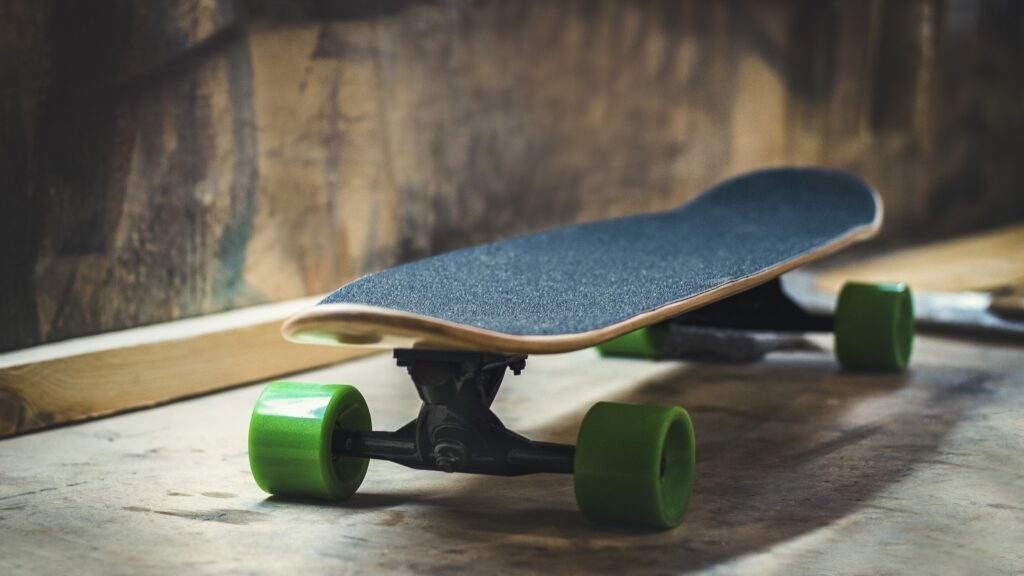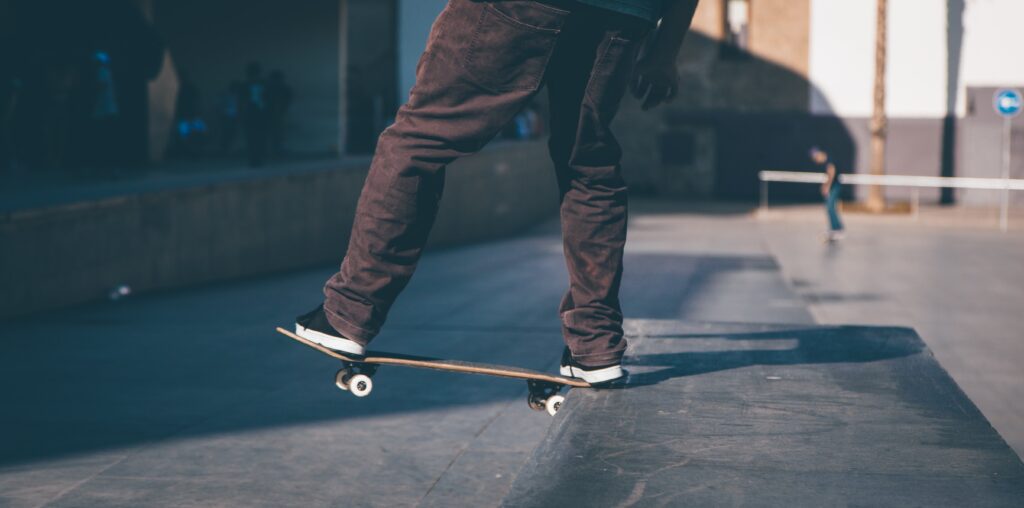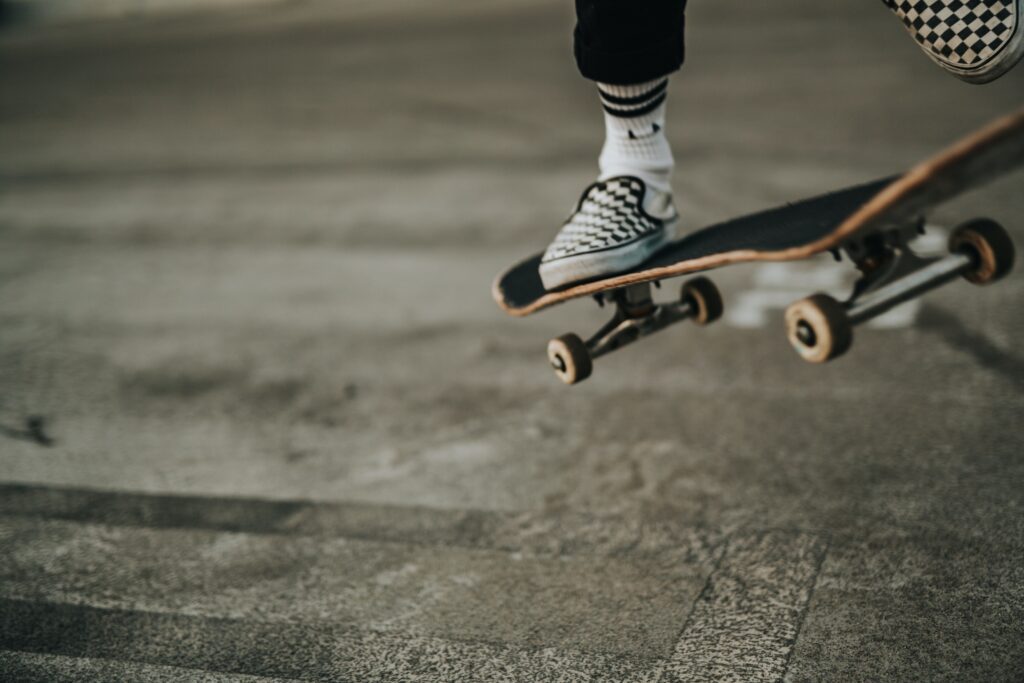Alright, so you’re eager to learn how to execute a proper skateboard boneless? Look no further, because in this article, we’ll break down the essential steps for you. Whether you’re a beginner or already have some experience on the board, we’ll guide you towards perfecting this impressive trick. So grab your skateboard and get ready to embark on a thrilling ride as we unveil the secrets to executing a flawless skateboard boneless. Get ready to elevate your skateboarding skills and leave your friends in awe!

Choosing the Right Skateboard
When it comes to skateboarding, choosing the right skateboard is crucial. There are several factors to consider, starting with the deck size and shape. The size of the deck refers to its width, which can range from 7.5 inches to over 9 inches. It’s important to choose a deck size that feels comfortable and provides enough stability for your feet. Additionally, the shape of the deck can affect the way the skateboard performs. There are numerous shapes to choose from, such as popsicle, cruiser, and old school. Each shape offers its own benefits and is suitable for specific styles of skateboarding.
Trucks and wheels are equally important when selecting a skateboard. The trucks attach the wheels to the deck and play a significant role in the skateboard’s maneuverability. It’s essential to choose trucks that match the width of the deck and provide a smooth turning experience. As for wheels, they vary in size and hardness. Larger wheels are suitable for cruising and rough surfaces, while smaller wheels are ideal for technical tricks. The hardness of the wheels, measured on the durometer scale, determines the level of grip and slide. So consider your skateboarding style and the terrain you’ll be riding on when choosing your trucks and wheels.
Griptape is a crucial component of a skateboard as it provides grip and traction for your feet. It is the sandpaper-like material that covers the top surface of the skateboard deck. Griptape comes in various colors and designs, allowing you to personalize your skateboard. When applying griptape, make sure to remove any air bubbles and smooth out any wrinkles. It’s also important to regularly inspect and replace your griptape when it becomes worn or loses its gripping ability.
Lastly, don’t forget about accessories. While they may not directly impact your skateboarding technique, they can enhance your overall experience. Accessories such as bearings, riser pads, and shock pads can improve speed, smoothness, and shock absorption. Additionally, don’t forget to invest in safety gear such as a helmet, knee pads, and elbow pads to protect yourself while skateboarding.
Getting the Basics Right
Before attempting any tricks, it’s essential to get the basics right. This includes your stance and foot placement, balance and center of gravity, and practicing and warming up.
Stance and foot placement are crucial for maintaining stability and control on your skateboard. There are two main stances: regular and goofy. In the regular stance, your left foot is forward, while in the goofy stance, your right foot is forward. Experiment with both stances and choose the one that feels the most comfortable for you. Once you’ve determined your stance, position your feet shoulder-width apart, with your front foot angled slightly towards the nose and your back foot placed on or slightly behind the bolts of the back truck.
Balance and center of gravity play a significant role in your skateboarding technique. Keep your weight centered over the board, distributing it evenly between your front and back foot. This will help you maintain control and stability while riding and executing tricks.
Before attempting any trick, it’s important to practice and warm up. Warm up your body with some light stretching exercises to prevent injuries and loosen up your muscles. Spend some time riding around, getting a feel for your board, and building your confidence.
Once you’ve mastered the basics, it’s time to move on to learning the boneless technique.

Learning the Boneless Technique
The boneless is a classic skateboard trick that involves launching off the board, grabbing it mid-air, and then reestablishing contact with the board. It’s a trick that requires commitment, proper foot positioning, and setting up for success.
Understanding the boneless trick is crucial. Watch tutorial videos or observe experienced skateboarders executing the trick to understand the mechanics and movements involved. Breaking down the trick into smaller components can help in mastering each step.
Committing to the trick is essential. The boneless requires a leap of faith and can be intimidating at first. Trust in your abilities and fully commit to the trick to achieve the desired results.
Proper foot positioning is key to executing a boneless successfully. Start by placing your front foot in a similar position to an ollie, with your toes slightly angled towards the nose. Your back foot should be placed on or just behind the bolts of the back truck.
Setting up for the trick involves finding the right ramp or obstacle to launch from. Look for a ramp or ledge that provides a suitable height and angle for executing the boneless. Take a moment to analyze the setup and plan your approach.
Executing the Boneless
Now that you’ve learned the boneless technique and set up for the trick, it’s time to execute it. This involves approaching the ramp or obstacle, pumping for speed, launching off the board, and grabbing the board mid-air.
Approach the ramp or obstacle with confidence. Keep your body relaxed and maintain a steady speed. As you near the ramp or obstacle, prepare yourself mentally and physically for the trick.
Pumping for speed is crucial to gain momentum for the boneless. Bend your knees and use your legs to generate power by compressing and extending. This pumping motion will help you launch off the board with greater force.
Launching off the board is the most critical part of the boneless. As you reach the peak of your jump, push off the board with your back foot, launching both yourself and the skateboard into the air. Extend your body fully to maximize height and distance.
While in the air, grab the board with your leading hand. This can be done by reaching down towards the nose or tail, depending on your preference. Hold onto the board firmly but avoid gripping it too tightly, as this can hinder your ability to maneuver.

Landing and Rolling Out
As you soar through the air with the board in hand, it’s crucial to focus on landing and rolling out smoothly. Spotting your landing is essential, as it allows you to prepare yourself for the impact and adjust your body accordingly.
Bracing for impact is crucial to prevent injuries. As you approach the landing, flex your knees and maintain a slight bend in your legs. This will help absorb the impact and maintain stability upon landing.
Roll out smoothly to maintain control and momentum. Aim to land with your weight evenly distributed between your feet. Use your knees and ankles to absorb any remaining impact and roll away smoothly.
Once you’ve landed the boneless successfully, take the time to refine your technique. Analyze your approach, execution, and landing to identify areas for improvement. Practice consistently and make adjustments as necessary to enhance your boneless technique.
Progression and Variations
Once you’ve mastered the boneless trick, it’s time to add style and creativity to your skateboarding. Experiment with different variations of the boneless, such as grabbing the board with your non-leading hand or adding a spin in the air.
Combining the boneless with other tricks can add a unique flair to your skateboarding. Explore ways to incorporate the boneless into your favorite tricks and transitions. This will not only challenge your skills but also allow you to express your individual style.
As you gain confidence and skill, consider transitioning to bigger ramps and obstacles. Gradually increase the difficulty level and push yourself to new heights. Remember to always prioritize safety and gradually progress to more challenging setups.
Lastly, strive to develop your own signature boneless. Put your own twist on the trick, incorporating your personal style and creativity. This will not only set you apart from the rest but also make skateboarding truly yours.
Safety Tips and Precautions
Skateboarding can be an exhilarating sport, but it’s important to prioritize safety. Wearing protective gear is crucial to minimize the risk of injuries. Invest in a quality helmet, knee pads, elbow pads, and wrist guards. These protective gear help cushion falls and protect vulnerable parts of your body.
When starting out, it’s recommended to practice on smaller obstacles. Mastering the boneless on smaller ramps or ledges will build your skills and confidence before progressing to larger setups. Remember, Rome wasn’t built in a day, and mastering the boneless takes time and practice.
Always practice skateboarding in controlled environments. Choose skateparks or designated areas that offer a safe and controlled space to skate. Avoid busy streets or areas with heavy traffic, as these pose significant risks.
Lastly, listen to your body. Skateboarding can be physically demanding, and it’s important to recognize your limits. Take breaks when needed and avoid pushing yourself beyond your comfort zone. Listen to any signs of pain or discomfort and seek medical attention if necessary.
Common Mistakes and Troubleshooting
Skateboarding, like any sport, comes with its fair share of challenges and mistakes. Here are some common mistakes that beginners often encounter and tips to troubleshoot them.
Lack of commitment is a common mistake when attempting the boneless. It’s essential to fully commit to the trick and trust in your abilities. Fear can hinder your progress, so work on building your confidence and embracing the excitement of trying something new.
Imbalanced weight distribution can throw off your execution. Make sure to distribute your weight evenly between your front and back foot throughout the trick. This will help maintain stability and control.
Landing too far forward or backward can lead to unbalanced landings and potential injuries. Practice adjusting your body position while in the air to ensure a smooth and centered landing.
Inability to generate enough pop is a common hurdle when learning the boneless. Focus on using your legs to pump for speed and generate power. The more force you exert during the launch, the higher and farther you’ll be able to go.
Frequently Asked Questions (FAQs)
How long does it take to learn the boneless?
The time it takes to learn the boneless varies from person to person. Some skateboarders may pick it up quickly, while others may require more time and practice. It’s important to remain patient and persistent, as mastering the boneless takes time.
Can I boneless on any skateboard?
Yes, you can boneless on any skateboard as long as it meets your personal preferences and requirements. Adjustments may be needed depending on the size and setup of your skateboard, but the boneless trick is adaptable to different skateboard setups.
Is it necessary to grab the board during a boneless?
Grabbing the board is a defining characteristic of the boneless trick. While it is not absolutely necessary, grabbing the board adds style and difficulty to the trick. It also helps maintain control and stability while in the air.
What muscles does the boneless work?
The boneless is a dynamic trick that engages various muscle groups. It primarily works the leg muscles, including the quadriceps, hamstrings, and calf muscles. Additionally, it engages the core muscles, upper body, and grip strength when grabbing the board.
Conclusion
Choosing the right skateboard, mastering the basics, and learning the boneless technique are key steps to becoming a skilled skateboarder. Remember to prioritize safety, practice regularly, and have fun throughout your skateboarding journey. With dedication and perseverance, you’ll be executing proper skateboard boneless tricks with style and confidence in no time. Happy skateboarding!
